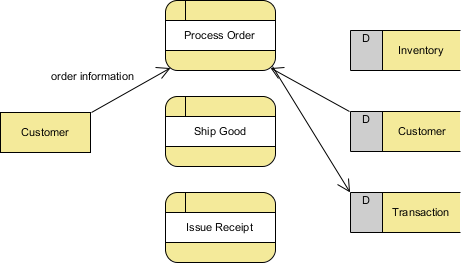

The different versions are Context Diagrams (Level 0), Partitioned Diagrams (single process only - one level), Functionally decomposed, leveled sets of Data Flow Diagrams. It is simple and easy to understand for users and can be easily extended and refined with further specification into a physical version for the design and development teams. Alone, however, it has limited usability. Together with these, it provides analysts and developers with solid models and specs. It can be easily integrated with data modeling, workflow modeling tools, and textual specs.
#Drawing dfd software software#
It has broad application and usability across most software development projects. Used effectively, it is a useful and easy to understand modeling tool. It is still considered one of the best modeling techniques for eliciting and representing the processing requirements of a system. One of the primary tools of the structured analysis efforts in 1970s was developed and enhanced by the likes of Yourdon, McMenamin, Palmer, Gane and Sarson. The DFD is an excellent communication tool for analysts to model processes and functional requirements. Helps with organization management by aiding you to understand logic and concept behind the system easily It can be used in almost every system to depict data flow thanks to its universal use It provides accurate and precise data flow representation without including any unwanted entities It can help is drawing realistic comparisons with the real-world entities when analyzing things like input and output entities. Within all these stages exist a ton of decisions to be made, and a DFD can help with that. A data flow diagram is a good preliminary step to creating an overview of any complex process with multiple informational components, and helps to better understand internal processes and flows. Decision-making: A database goes through several stages before deployments, such as creation and implementation. A data flow diagram (DFD) is a helpful tool to visualize four components of a system: the process, the data store, the entities, and the data flows.Error detection: A DFD can also allow you to scan the system in case of any issue with your system.Database designing: A compressive and complete data flow diagram can help you come up with the overall database design.System analysis: With DFD, you can analyze and understand how a system should work before designing a database.Here are some of the major applications of DFDs. Data flow diagrams have multiple applications and benefits, and more importantly, they have universal appeal.


 0 kommentar(er)
0 kommentar(er)
